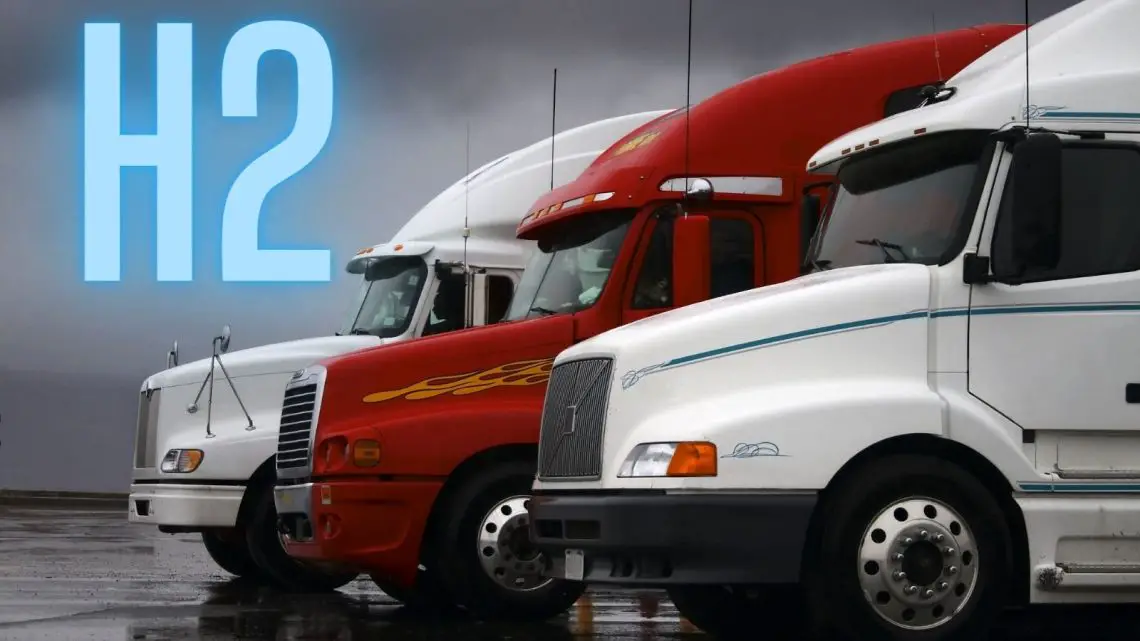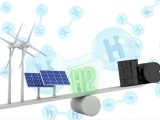
Conversions from diesel to hydrogen trucks are gaining traction
April 8, 2023Retrofitting systems allow vehicles and fleet owners to run existing engines on H2.
As good as it might sound to replace an entire fleet of diesel vehicles with hydrogen trucks in order to dramatically reduce a carbon footprint, most companies simply wouldn’t be able to afford that kind of investment all at once. This is particularly true when they already have vehicles that are still running just fine.
Conversions allow existing vehicles to run mainly on H2 instead of polluting diesel fuel.
That said, just because a company isn’t ready to replace its entire fleet, it doesn’t mean that hydrogen trucks are out of the question. Existing large fleets can continue to be used – not only saving money, but also reducing unnecessary waste – while drastically shrinking their greenhouse gas emissions by using conversions from diesel to H2.
In this way, companies can hold onto their existing assets and still decarbonize in order to join the fight against the climate crisis and keep compliant with newly adopted emissions regulations as they happen.

Researchers have been developing several types of retrofit systems for converting diesel to hydrogen trucks.
For instance, researchers from the University of New South Wales (UNSW) have prototyped and tested a retrofit system capable of converting diesel engines to run on 90 percent H2. This greatly reduces both the carbon dioxide and the nitrous oxide emissions from the vehicle’s operations while simultaneously providing a 26 percent efficiency boost.
A video on new dual fuel hydrogen diesel engine technology
 This conversion does mean that the vehicle will need to continue to use diesel fuel for 10 percent of its operation. Therefore, it isn’t a fully green conversion. Still, what it provides is a way for businesses to slash the majority of their greenhouse gas emissions without trashing assets that can still remain useful for a long time. In this sense, the reduced waste offsets a considerable amount of the remaining emissions from the vehicle’s operations.
This conversion does mean that the vehicle will need to continue to use diesel fuel for 10 percent of its operation. Therefore, it isn’t a fully green conversion. Still, what it provides is a way for businesses to slash the majority of their greenhouse gas emissions without trashing assets that can still remain useful for a long time. In this sense, the reduced waste offsets a considerable amount of the remaining emissions from the vehicle’s operations.
No Fuel Cells Needed
This system, like most retrofits converting diesel to hydrogen trucks and cars, does not involve the use of fuel cells, but is instead adds H2 injection directly into the cylinder. It also adds independent injection timing control for both the H2 and diesel systems. In the case of the system developed by the UNSW team, it also doesn’t require the hydrogen fuel to be high purity due to a stratification technique that forms pockets of higher and lower concentrations of H2. In this way, the nitrous oxide emissions are substantially reduced when compared to the operation of a diesel vehicle.
FAQs on Hydrogen Trucks and Retrofitting Systems
Q1: What are hydrogen trucks and why are they important? A: A hydrogen truck is a vehicle that runs primarily on hydrogen (H2) rather than traditional fuels like diesel. They are important because they offer a way to reduce carbon footprint and greenhouse gas emissions, contributing to the fight against climate change.
Q2: Can existing diesel vehicles be converted to run on hydrogen? A: Yes, retrofitting systems have been developed that allow existing diesel vehicles to be converted to run mainly on H2. This enables companies to continue using their existing assets while drastically reducing their emissions.
Q3: Is it expensive to convert a fleet of diesel vehicles to hydrogen? A: While the cost can vary, converting an entire fleet at once can be a substantial investment. However, the long-term savings in fuel costs and the reduction in emissions can make it a worthwhile investment.
Q4: Are these retrofit systems completely green? A: Not entirely. Most retrofit systems allow for a vehicle to run on 90 percent H2, meaning diesel fuel is still used for 10 percent of its operation. However, this does greatly reduce the vehicle’s emissions.
Q5: Do retrofit systems require the use of fuel cells? A: No, most retrofit systems do not involve the use of fuel cells. Instead, they add H2 injection directly into the cylinder, and independent injection timing control for both the H2 and diesel systems.
Q6: Do retrofit systems require high purity hydrogen fuel? A: Not necessarily. Some systems, like the one developed by the University of New South Wales team, don’t require high purity hydrogen fuel due to a stratification technique that forms pockets of higher and lower concentrations of H2. This helps to further reduce nitrous oxide emissions.
Q7: How effective are these retrofit systems in reducing emissions? A: Retrofit systems can significantly reduce greenhouse gas emissions. For instance, the system developed by the UNSW team has been shown to provide a 26 percent efficiency boost and greatly reduce carbon dioxide and nitrous oxide emissions from the vehicle’s operations.




 With over 15 years of reporting hydrogen news, we are your premier source for the latest updates and insights in hydrogen and renewable energy.
With over 15 years of reporting hydrogen news, we are your premier source for the latest updates and insights in hydrogen and renewable energy.
I am a Consultant and diesel particulate filter installer in California Our Air Resource Board is only interested in 100% hydrogen for on road trucks but I can see a big market for off road equipment Have you done off road conversions?
What do you estimate it will cost to convert a F350 diesel truck (2022) to hydrogen using your approach? (I’m a private owner)
How do I find someone willing and able to try this on my diesel truck? I’m in Massachusetts.